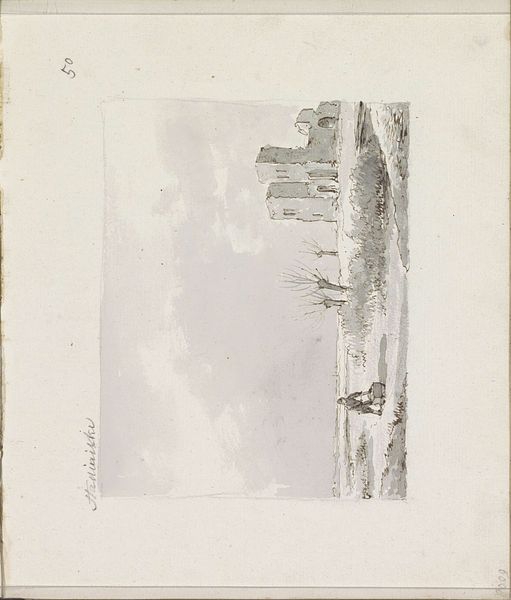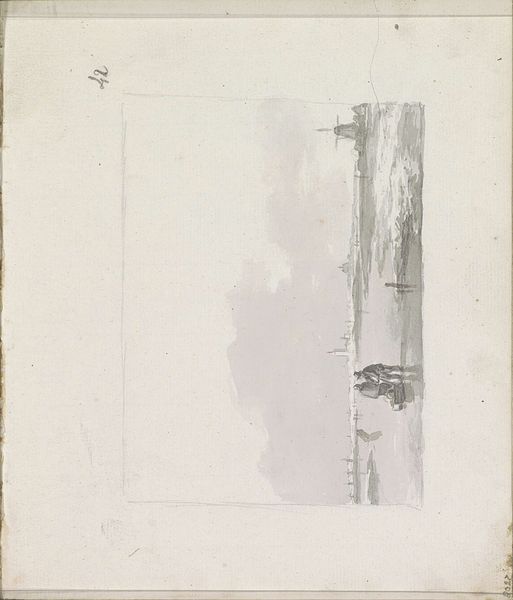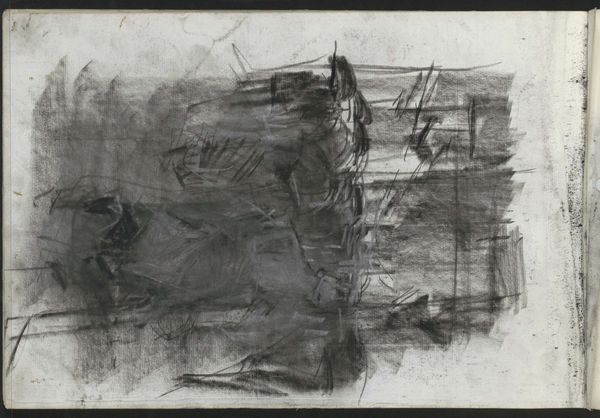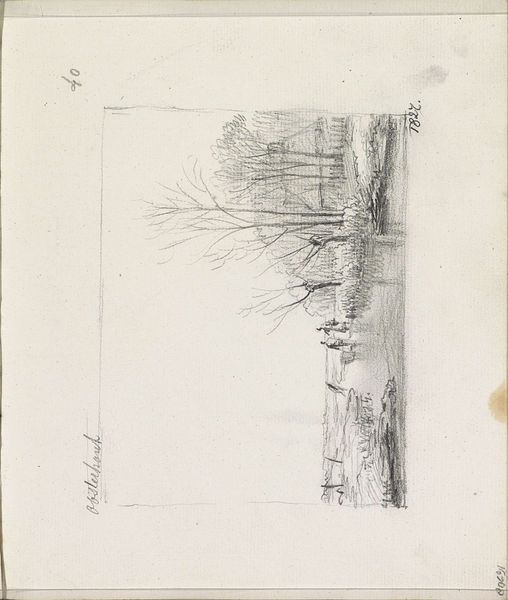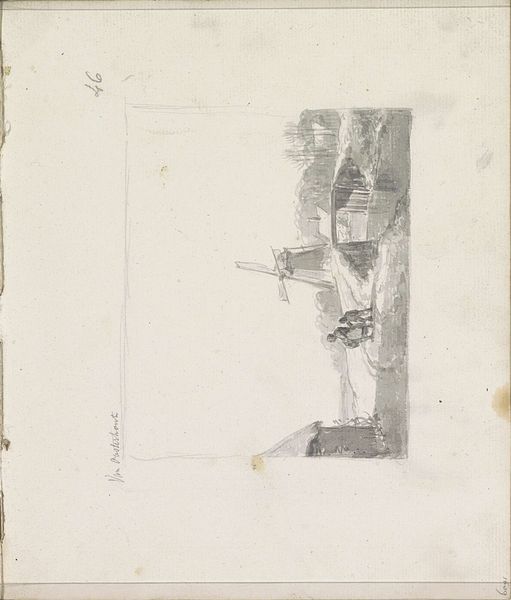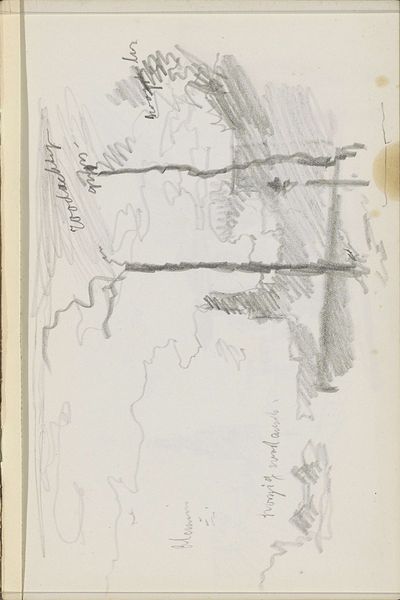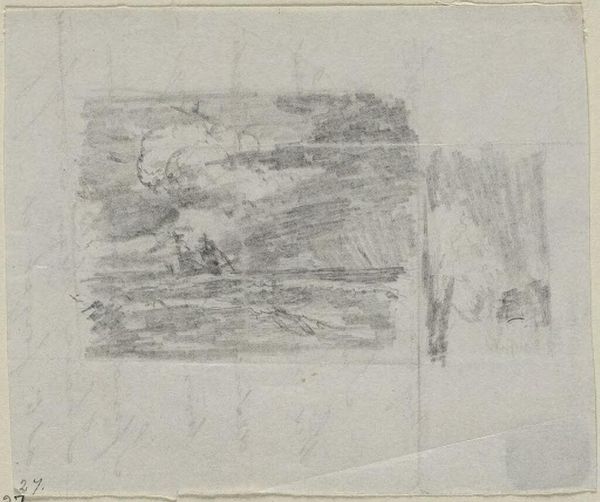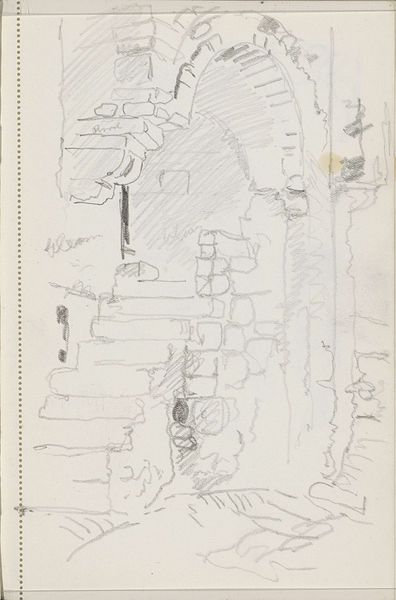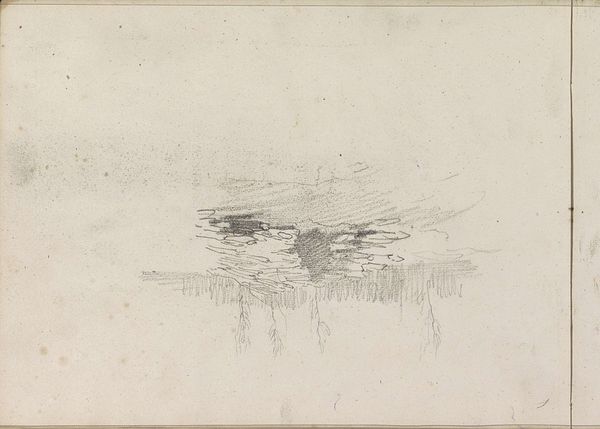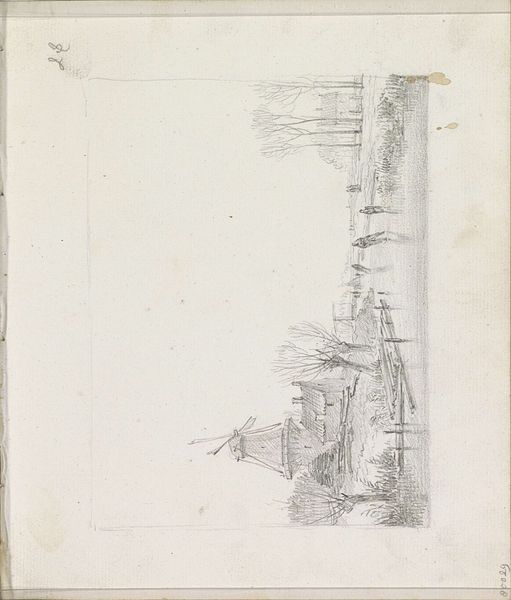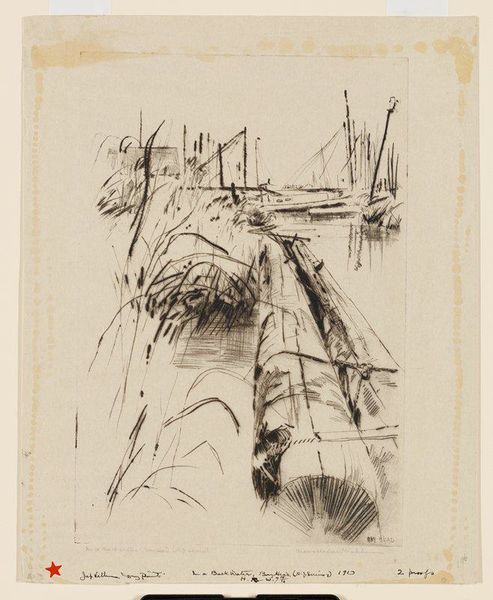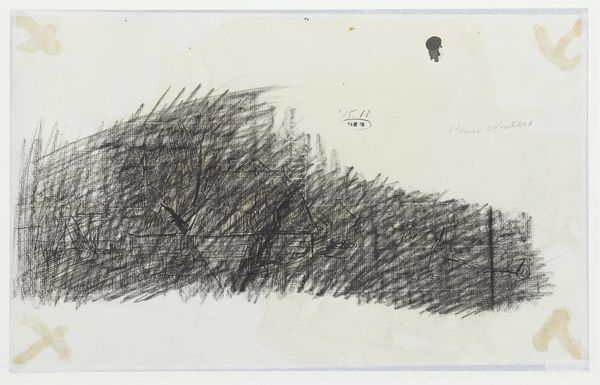
drawing, pencil
#
drawing
#
amateur sketch
#
light pencil work
#
pencil sketch
#
sketch book
#
incomplete sketchy
#
landscape
#
personal sketchbook
#
sketchwork
#
romanticism
#
pen-ink sketch
#
pencil
#
sketchbook drawing
#
sketchbook art
Copyright: Rijks Museum: Open Domain
Curator: So, here we have Andreas Schelfhout's "Two 'bomschuiten' on the Beach," a pencil drawing from around 1825-1829, currently held in the Rijksmuseum. Editor: It has a wonderfully delicate feel, almost ephemeral. Given the looseness of the sketch, what aspects stand out to you? Curator: I find myself drawn to the visible signs of process, the materiality of its making. Note the repeated lines, the pentimenti; they show Schelfhout grappling with form, the labor involved in translating observation to paper. It's not just about the *what*, the boats, but *how* the drawing comes into being. Consider, too, the social context: why make this drawing? Was it preparation for a larger work, or a personal study? How does its creation and purpose inform its reception? Editor: That makes me see the "unfinished" quality differently. It’s not a lack of skill, but more a record of the artist working through ideas. I am wondering, though, is there something unique about his methods, perhaps compared to his contemporaries? Curator: Well, looking at the type of pencil he would have been using and how common pencils were at this time we may learn even more about Schelfhout. Remember, during the Romantic era, there was a growing interest in individualized expression, but it’s also a period of burgeoning industrialization. Think about where those materials are sourced from. What class is now able to purchase pencils? Editor: I didn't think about the industrial aspects and sourcing materials before. That’s such a good way of examining not only art but societal trends. Curator: Exactly. And these "casual" sketches offer a window into the working processes that ultimately support more celebrated, finished pieces. Editor: It's like seeing the gears of a machine, not just the polished product. It is interesting to look at how Romanticism and early industry meet each other through this piece. Thank you!
Comments
No comments
Be the first to comment and join the conversation on the ultimate creative platform.
